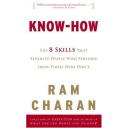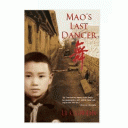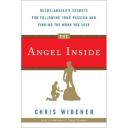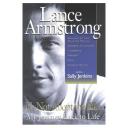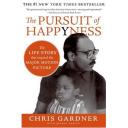The author uses the word “know-how” as something of a individual core competency for a CEO or company leader to perform or bring the “substance” to a company. A person of good “know-how” can turn around a failing company or produce consistent high return for the company. He outlines the following 8 skills:
1. Positioning and Repositioning. The ability to find an idea for the organization that meets customers’ demands and makes money. A lot of times, the leader need to change the business model to extract more profit from the market or remain viable, by zeroing in on the central idea that meets customer needs and makes money. Walmart had to re-position itself to offer its customers a wide assortment of good quality merchandise at the lowest possible prices. Moving from the rural area to the metro area by taking on the big guys. The 2nd tweak lies in leveraging its strength in logistics and IT to move into groceries. The classic example now is the newspaper industry.
2. Pinpointing External Change. The ability to identify patterns that place the organization on the offensive and connecting the dots. Ask yourself the 7 simple questions: 1) What is happening in the world today? 2) What part of my frame of reference has worked for me? What hasn’t worked for me? 3) What does it mean for everyone? 4) What does it mean for us? 5) What would have to happen? For macroeconomic trends to create opportunities, certain things have to happen. 6) What do we have to do to play a role? 7) What do we do next?
3. Leading the Social System. The ability to get the right people with the right behaviors and the right information to make better decisions and business results. Here is the Social System Test:
a) The built-in conflicts that are part of every organizations are being surfaced. b) These conflicts are resolved in a timely way by people committed to delivering results. c) Information flows horizontally across silos and is not hoarded or deliberately distorted. d) The right questions are raised so that you can look at your business from both “50,000” feet” and at ground level and conduct brutally honest dialog. e) Operating mechanisms are designed so that they result in high quality, timely decisions are help deliver the aspired results. f) You know the points of intersection where operating mechanisms are needed for people to make trade-offs and share information. g) Appropriate and continuous improvements are made in the working of the operating mechanisms: creating new ones, combining some, eliminating others. h) Each operating mechanism is connected in a unfiltered way to sources of external information. i) Leaders have the psychological courage to confront reality and shape behavior of participants in line with the value of the business. The right behavior and values are reinforced and those who deviate are dealt with.
4. Judging People. The ability to calibrate people based on their actions, decisions and behaviors and matches them to the job’s non-negotiables. How to spot the future leaders: a) They consistently deliver ambitious results. b) The continuously demonstrate growth, adaptability, and learning better and faster than their excellently performing peers. c) They seize the opportunity for challenging, bigger assignments, thereby expanding capability and capacity and improving judgment. d) They have the ability to think through the business and take leaps of imagination to grow the business. e) They are driven to take things to the next level. f) Their powers of observation are very acute, forming judgments of people by focusing on their decisions, behaviors, and actions, rather than relying on initial reactions and gut instincts; they can mentally detect and construct the “DNA” of a person. g) They come to the point succinctly, are clear thinkers, and have the courage to state a point-of-view even through listeners may react adversely. h) They ask incisive questions that open minds and incite the imagination. i) They perceptively judge their own direct reports, have the courage to give them honest feedback so that direct report grow; they dig into cause and effect if a direct report is failing. j) They know the non-negotiable criteria of the job of their direct reports and match the job with the person; if there is a mismatch they deal with it promptly. k) They are able to spot talent and see the “God’s gift” of other individuals.
5. Molding a Team. The ability to coordinate competent, high-ego leaders.
6. Setting Goals. The ability to balance goals that give equal weighting to what the business can become and what it can achieve.
7. Setting Priorities. The ability to define a path and direct resources, actions, and energy to accomplish goals.
8. Dealing with Forces beyond the Market. The ability to deal with pressures you cannot control but affect your business. How not to be between a rock and a hard place: a) get the management team psychologically prepared for the fact that societal issues will arise and can pick up stream fast given today’s high transparency and the Internet. b) As you examine your company’s positioning, you need to anticipate what societal issues might be raised and what kinds of advocacy groups might raise them. c) Develop a methodology for dealing with such issues, first in terms your personal psychology, and second for the organization. What are your methods for picking up early warning signals of issues that are just emerging or gaining traction? How will you assess the power of various causes? d) Be prepared to exchange information and build bridges with advocacy groups to help shape the issues and solutions. Go on the offensive.
Citing case studies from his consulting practice, Charan identifies personal traits of leaders that help or interfere with the know-hows.
1. Ambition. The drive to accomplish something but not win at all costs.
2. Tenacity. The drive to search, persist and follow through, but not too long.
3. Self-confidence. The drive to overcome the fear of failure and response, or the need to be liked and use power judiciously but not become arrogant and narcissistic.
4. Psychological Openness. The ability to be receptive to new and different ideas but not shut other people down.
5. Realism. The ability to see what can be accomplished and not gloss over problems or assume the worst.
6. Appetite for Learning. The ability to grown and improve know-hows and not repeat the same mistakes.
This book went through the 8 skills with fairly good examples to backup his points. Of course, if a person has all the 8 know-how skills, he/she should make a good CEO indeed. Often times, there is “luck” involved in having the right positioning strategy at the right place at the right time. Perhaps, that would make the 9th “know-how.” The narration of the audio book was good and the flow was as smooth as one large body of idea that I had to borrow the physical book to re-capture the 8 skills.
